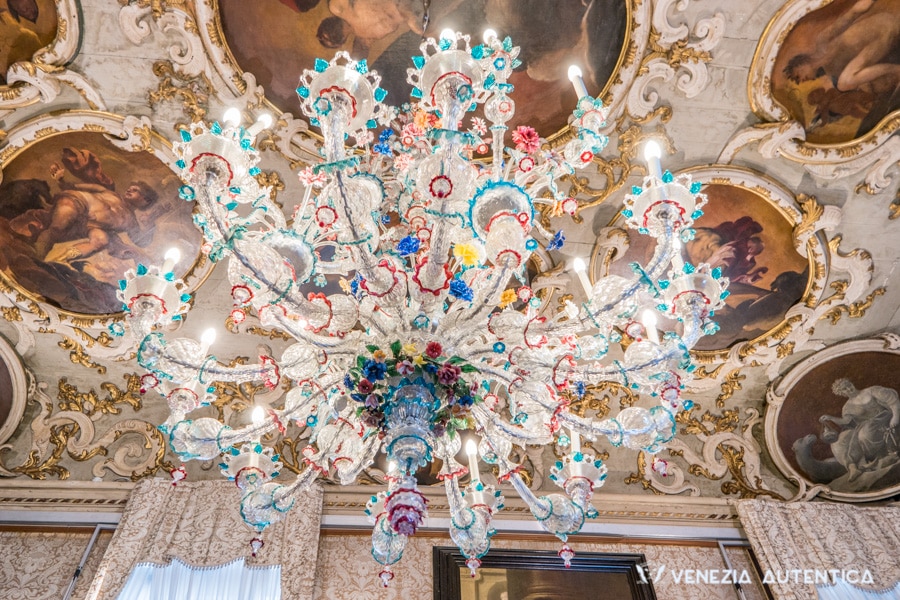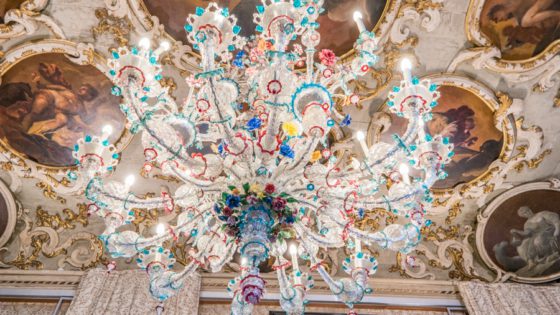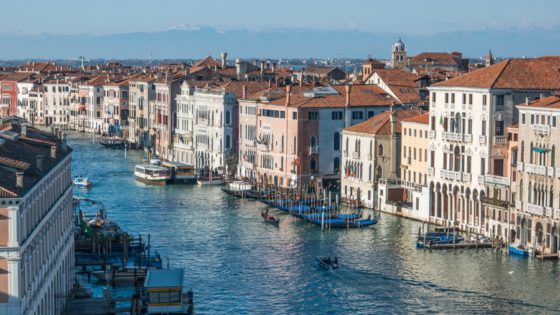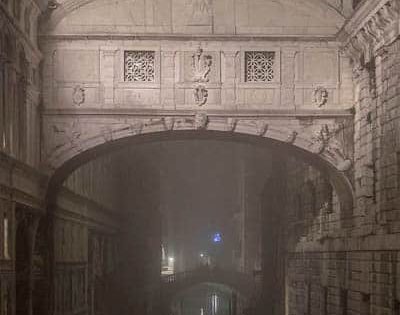Saint Mark's in Venice
The area of Saint Mark’s in Venice was the centre of the political and executive power of the Venetian Republic, the longest-lasting State ever.
Today, Saint Mark’s it is the must-see place for every visitor coming to Venice.
This small area, known as Area Marciana, is filled with an incredible amount of exceptional buildings, breathtaking museums, and renowned landmarks that testify to the greatness of the ancient Republic of Venice, the Serenissima.
What to see in Saint Mark's in Venice
- The Saint Mark’s Basilica
- The Saint Mark’s Bell Tower to the right of the Basilica
- The Clock Tower on the left of the Basilica.
- The Napoleonic Wing on the opposite side of the square.
- The two Houses of the Procurators facing each other.
- The Marciana Library
- The stunning Doge’s Palace
- Two great colums topped by the statues of a winged lion representing Saint Mark’s and a statue of San Todaro in front of the Saint Mark’s Basin
- The Bridge of Sighs
- The Royal Gardens
All these places can be admired around Saint Mark’s square in under 2 minutes on foot!
Of course, while it is possible to look at everything in just a few minutes quickly, one could easily spend hours or even days visiting and discovering this area thoroughly.
Everyone wants to visit the Basilica and the bell tower, but Museo Correr hosted in the Ala Napoleonica and the Procuratie Nuove, or the Marciana Library, which hosts one of the most significant classical text collections in the world are also places you shouldn’t write off.
This is why we made a small introduction to the landmarks in Saint Mark’s in Venice, to give you a taste of what you will be able to enjoy once you come to visit.
Related: 14 tips to make the best of your first trip to Venice Italy
360° Video about the Landmarks of Saint Mark's in Venice
Saint Mark's bell tower, the Venice Landlord watching over the city
Measuring 98,6m in height, the Saint Mark’s Bell Tower is the tallest building in Venice.
When it was first built, in the 9th Century, it worked as a watchtower and a lighthouse. In over a thousand years of existence, the campanile was struck by lightning several times because of its height, and it was severely damaged on 10 occasions.
Since 1772, luckily, the bell tower has a lightning conductor.
The lightnings and the fires stopped, but one morning in 1902, the Bell Tower suddenly collapsed entirely to the ground, leaving the Venetians and the whole world speechless.
Despite the shock, Venetians rebuilt the Campanile with a highly conservative restoration, returning the bell tower for the whole world to see, “dov’era e com’era”: where it was and how it was before it collapsed.
Saint Mark's Church, or Basilica di San Marco
The Saint Mark’s Basilica has surprising origins. The church was first built between 828 and 832 C.E., after Venetian merchants stole the relics of the Evangelist Mark from Alexandria in Egypt and brought them to Venice.
The relics of Mark, a figure of incredible importance in the Christian religion, gave incredible religious importance to Venice. This first church burned in 976 during a riot against a Doge, and a new version was built only in 1071, almost 100 years later.
Saint Mark was declared the new patron of Venice as soon as the church was inaugurated, but only in 1807, after the end of the Serenissima, did the Saint Mark’s church become the Cathedral of the city.
While the structure (almost) didn’t change since 1071, the succeeding centuries contributed to a continuous change and enrichment of its adornment.
Thanks to the Venetian wealth, an incredible trades network, and very profitable wars, Venetian ships continuously supplied columns, marbles, and sculptures from the east.
After the IV Crusade in 1204, where Venice defeated and conquered Byzantium, a further and incredible amount of treasures and masterpieces were taken from the then biggest and wealthiest metropole in the world and used to enrich even further Saint Mark’s church.
The legendary Doge's Palace in Saint Mark's
The Palazzo Ducale, or Doge Palace, has been the seat of the Political Power of the Venetian Republic.
It was the residence of the Doge as well as house to the political bodies of the State.
Adminstrative offices, law courts, grand stairways, council halls, apartments and prisons were all fit into this beautiful and complex yet efficient building.
Initially built in the 10th century in a byzantine style, the reconstruction started in 1340 with the creation of the “Sala del Maggior Consiglio”, or Great Council Hall, is a clear example of gothic architecture.
Over the following centuries, multiple expansions and changes took place without changing however the overall gothic style.
The Plalazzo Ducale lost its functions with the arrival of Napoleon in 1797 and was then converten in a public museum in 1923.
Since 1923 the Palazzo Ducale, which is the most important museum of the Venice, tells the history of the Serenissima, the longest lasting republic in history.
What is amazing in Venice is that all the major building have terrific facade while the sides or the back of the building are not as beautiful and that’s for a good reason: every building in Venice was meant to be seen from the water.
This is they way the city was meant to be lived, by navigating it, by bringing merchandise and spices from distant places.
The Saint Mark's clock tower, 500 years of service ticking the time for the Venetians.
The beautiful Saint Mark’s clock tower was built in a renaissance style by Ranieri and Codussi in 1499. Originally, the clock displayed the time pointing its hands on the finely decorated 24hours clock face. Since 1858, however, the clock displays the hours with roman numbers and the minutes with arab numbers, making it one of the first digital clock in history.
Several changes took place over the centuries, such as the involuntary change of color of the “Moors”, the statues striking the bell on the top of the tower, and the Magi procession taking now place only during the Ascension week and on Epiphany.
A further modification sadly occurred also once the city was conquered by Napoleon in 1797: a statue of the doge Barbarigo, which was kneeling in front of the lion on the facade of the tower, got destroyed by the french, who wanted to remove from the city all the symbols of the Serenissima.
Bridge of Sighs, the most misunderstood bridge of Venice
Hanging just over the Rio de la Canonica, its is possible to admire one of the most famous yet most misunderstood bridges of Venice: the Ponte dei Sospiri, or Bridge of Sighs.
Every year, millions of people standing on the Ponte della Paglia take a picture while kissing their better half, with the Bridge of Sighs as the perfect and most romantic background… but here’s the catch:
The Ponte dei Sospiri was built in 1614 to connect the inquisitors’ offices in Palazzo Ducale (on the left) to the Prigioni Nuove or the New Prisons (on the right).
As you might have guessed, the “sighs” the name refers to are the heavy sighs of the convicted who were leaving behind their liberty and were most likely seeing Venice for the last… those were definitely not the kind of sighs you wish for a romantic love story.
Marciana Library, a fabulous library containing written treasures
Opposite to it, you can see the Biblioteca Marciana, designed by Jacopo Sansovino in 1537.
The original project included a majestic dome, but when the initial project was almost completed, the dome crashed.
Sansovino was put under arrest and had to repay the economic loss with his own money before being released.
After this accident, he decided to give up on building the dome… you never know!
Procuratie and Ala Napoleonica
Since the XII, the Procuratie housed the offices and apartments of the procurators of Saint Mark.
Originally the Procuratie had wings on the west side of the square and they were separated only by a small church.
In 1810, after the fall of the Serenissima, the wings and the church were demolished and replaced by a new building, the Napoleonic Wing, or Ala Napoleonica.
Since 1922 the Ala Napoleonica and the Procuratie Nuove on the South side of the square, host the Museo Correr.
Saint Mark's Columns
Two tall colums face the Saint Mark’s Basin. On top of these colums there are San Todaro, the first patron of the city, and a winged lion, representing Saint Mark, the last and current patron of Venice.
We hope that this short introduction to the landmarks of Saint Mark’s in Venice will give you the desire not only to admire these beautiful buildings from the outside but also to take the time to visit them and discover them in depth.
Trust us, it is worth it!
I'm visiting Venice. Why should I follow your recommendations?
The way you visit Venice has an impact both on the quality of your experience and on Venice itself. Chilling, exploring, shopping, eating and drinking where the locals do, can make a huge impact both on the memories you bring home and on the local economy and community.
Home >> Venice and Venetians >> Venice Explained >> You’re Here
Facts, Curiosities, History of Venice, Italy
More about life in Venice, Italy



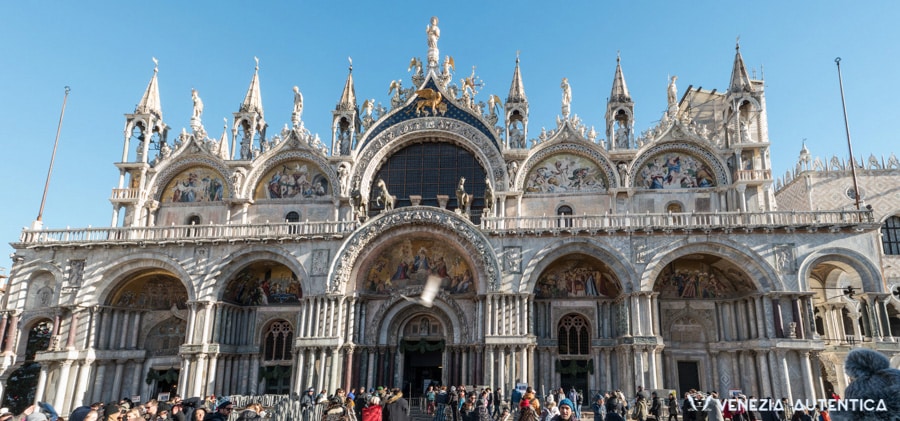
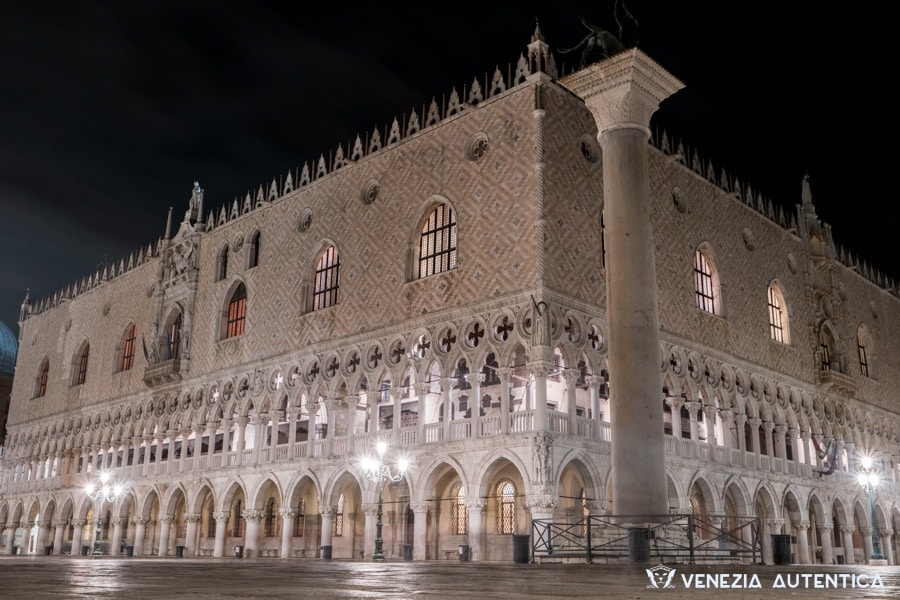

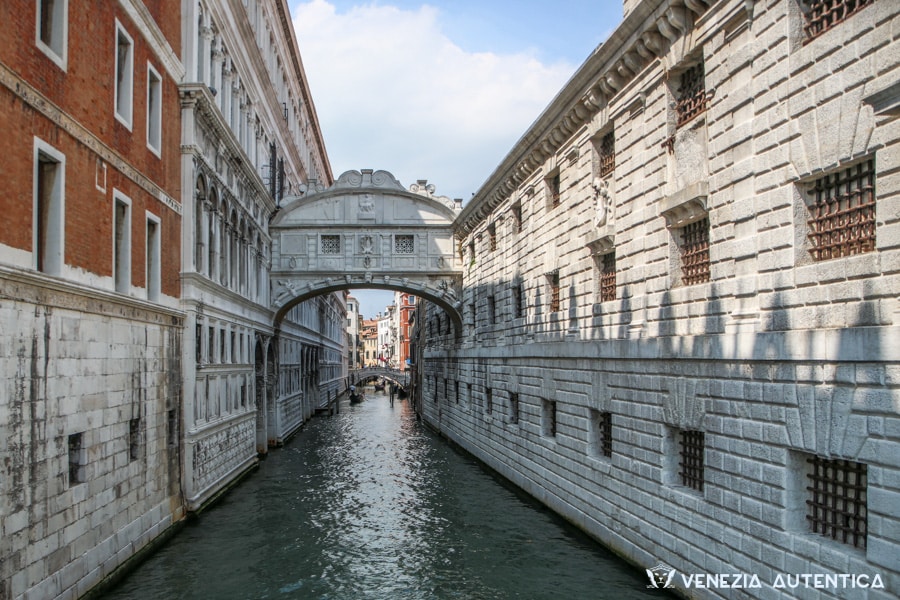
![Saint Mark's in Venice: introduction to its amazing Landmarks [Article + 360° VIDEO] - Saint Mark's - Venezia Autentica | Discover and Support the Authentic Venice - The area of Saint Mark's in Venice was the centre of the political and executive power of the Venetian Republic, the longest-lasting State ever.](https://cdn1.veneziaautentica.com/wp-content/uploads/2017/04/SAM1995.jpg)
![Saint Mark's in Venice: introduction to its amazing Landmarks [Article + 360° VIDEO] - Saint Mark's - Venezia Autentica | Discover and Support the Authentic Venice - The area of Saint Mark's in Venice was the centre of the political and executive power of the Venetian Republic, the longest-lasting State ever.](https://cdn1.veneziaautentica.com/wp-content/uploads/2017/04/0I5C4646.jpg)
![Saint Mark's in Venice: introduction to its amazing Landmarks [Article + 360° VIDEO] - Saint Mark's - Venezia Autentica | Discover and Support the Authentic Venice - The area of Saint Mark's in Venice was the centre of the political and executive power of the Venetian Republic, the longest-lasting State ever.](https://cdn1.veneziaautentica.com/wp-content/uploads/2017/04/SAM_2302.jpg)
